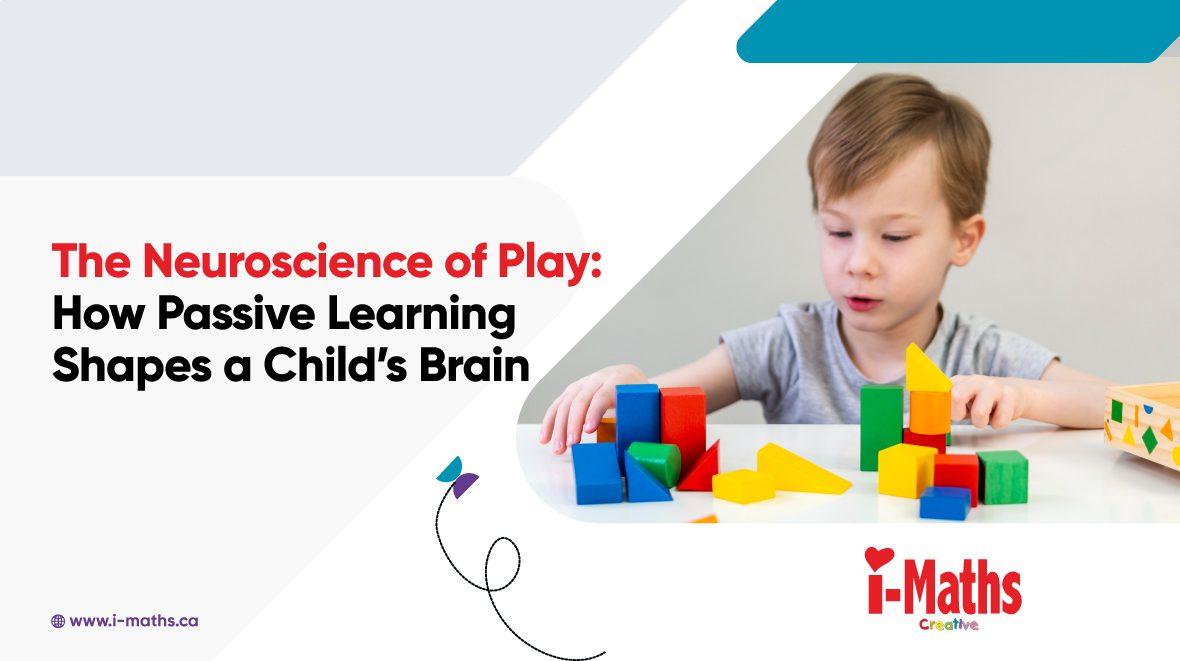We often underestimate the power of passive learning in a child’s development phase—a subtle yet influential force shaping the intricate pathways of a child’s brain forming essential skills that stay for a lifetime. In this blog, we will explore the neuroscience behind passive learning, exploring how this seemingly effortless process plays a pivotal role in sculpting the foundation for a child’s future success.
Decoding Passive Learning in Early Childhood
Passive learning, contrary to active engagement, involves the absorption of information without the child consciously striving to learn. It’s the essence of seemingly effortless learning that occurs in everyday moments, from observing actions to absorbing information from the surrounding environment. Going into neuroscience, we discover that passive learning engages neural circuits responsible for memory and pattern recognition, laying the groundwork for future cognitive abilities.
The early years of a child’s life stand as the most formative period for learning. During this critical developmental phase, the brain is exceptionally receptive to stimuli and experiences. The inherent plasticity of a young brain allows for the establishment of neural connections, forming the basis for lifelong learning and intellectual development.
Benefits of Passive Learning in Early Childhood:
Development of Curiosity
Passive learning nurtures a natural curiosity, fostering a love for exploration and discovery.
Observational Skills
Children develop keen observational skills as they passively absorb information from their surroundings, enhancing their understanding of the world.
Improved Attention Span
Through passive engagement with the environment, children learn to sustain attention to various stimuli. This practice supports the development of a longer attention span, which is crucial for academic success later on.
Natural Development of Motor Skills
Passive learning often involves activities that contribute to the development of fine motor skills. For example, playing with building blocks or handling art materials enhances hand-eye coordination and manual skills.
Cognitive Framework
Activation of neural circuits associated with memory and pattern recognition establishes a robust cognitive framework, providing the scaffolding for advanced cognitive abilities such as problem-solving and critical thinking.
The Role of Play in Passive Learning
At the heart of passive learning is the child’s ability to learn through play. Play, in all its glorious forms, becomes the vehicle for passive learning, allowing children to explore, experiment, and naturally absorb information. From imaginative play to unstructured exploration, these activities stimulate neural connections and contribute to the development of crucial cognitive skills. Understanding the neuroscientific underpinnings of play unveils its profound impact on the architecture of a growing brain.
The Neuroscience of Memory Formation
Passive learning, particularly through play, blends into the process of memory formation. Neuroscientific studies reveal that passive exposure to stimuli during play activates the hippocampus—the brain’s memory center. As children engage in passive learning experiences, their brains decode information effortlessly, creating a rich reservoir of memories that become foundational for future learning endeavors.
Shaping Success: The Long-term Impact of Passive Learning
Beyond the immediate joy of play and the subtle nature of passive learning lies a compelling narrative—the long-term impact on a child’s success. The neural connections forged during passive learning experiences form a strong base for future cognitive abilities, problem-solving skills, and adaptability. It lays the groundwork for a resilient, curious, and intellectually capable individual ready to face the complexities of the world.
By recognizing and optimizing the effectiveness of passive learning and early learning, parents play a crucial role in supporting a child’s intellectual potential.
i-Maths as an Early Math Enrichment Program promotes passive learning as the method of teaching foundational math skills. Our experienced instructors bring math to life through an array of engaging math activities for preschoolers. Picture your little one exploring mathematical concepts through interactive and fun games and play. From counting adventures with playful characters to hands-on activities that make math tangible, i-Maths transforms the learning experience into a captivating journey. The program not only teaches foundational math skills but does it in a way that sparks curiosity and excitement in the little ones. Join i-Maths today and watch as your child discovers the world where math is not just educational; it’s an adventure filled with fun and exploration. Give your preschooler the gift of learning math through play! Enroll Today!

